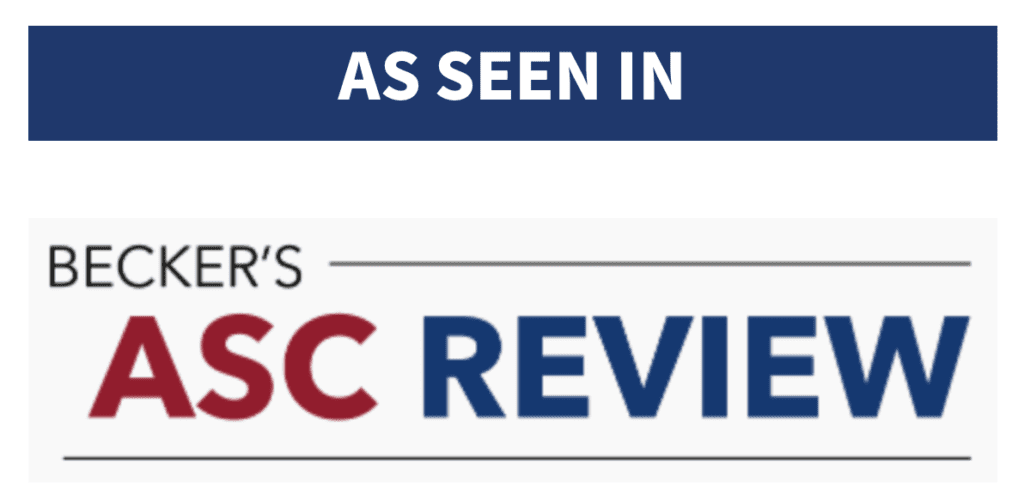
Ambulatory surgery centers help drive down healthcare costs, but to stay viable, ASCs must work hard to protect their revenue. Wasting minutes, failing to understand rates and payer mix and having compliance oversights can be costly.
In an executive roundtable discussion sponsored by Fellow Health Partners at the Becker’s ASC Review and Becker’s Spine Review 19th Annual Spine, Orthopedic and Pain Management-Driven ASC Conference, four revenue cycle experts discussed how ASCs can maximize their dollar per minute in the operating room, which key performance indicators (KPIs) drive revenue and the impact of compliance on the ASC bottom line.
Panelists were:
- Michael N. Brown, CEO, Fellow Health Partners
- Abby Pendleton, Esq., founder, The Health Law Partners
- Phillip Schrank, MD, orthopedic shoulder specialist and chief orthopedic strategy officer from Suffolk County (N.Y.)
- Alexandra Stevens, CPC, client relations, Fellow Health Partners
Four key takeaways were:
To improve time management and maximize dollar per minute in the operating room, ASCs must use real-time data that zeros in on specific behaviors and individual surgeons.
Phillip Schrank shared a concept called radical transparency that has been attributed to others. Key ideas are:
- Measure meaningful time intervals. For example, one ASC measured the time interval between the anesthesiologist finishing and the surgeon beginning. “That ASC had surgeons who were wasting up to 18 minutes per case because they couldn’t be bothered to walk from the lounge to the operating room [in a timely manner],” Dr. Schrank
- Measurements must be real-time. Remediation must be immediate.
- Measurements must be visible. “Imagine a timer in the lounge with a big board that shows which operating rooms are ready [in the previously cited example],” Dr. Schrank “Everyone is now looking at the surgeon who is still talking when the OR is waiting.”
- Improvements need to be valued. Individuals should be rewarded for better time management.
- Remediation must be personal. “Saying that on average, the plastic surgery department starts 18 minutes late is meaningless,” Dr. Schrank “That could mean one person starts an hour and a half late and five are starting on time. If you’re not making it personal, you won’t be able to drill down to see where your time loss is.”
- Change must be radical. “Pick one thing to measure and intervene immediately,” Dr. Schrank “It will change the culture of your ASC because they know time is valuable and that you’re watching them. You can institute this radical time transparency initiative with a stopwatch and a whiteboard to make huge changes in your profitability and culture and maximize those dollars per minute.”
Understanding contract rates and payer mix are key KPIs that drive revenue.
According to Michael N. Brown, there are many standard metrics and KPI’s that are used today. However, a starting point should always be understanding contracted rates and payer mix. Further, Alexandra Stephens added, “Evaluate your charges because you could end up only getting your max charge amount versus your contract rate,” she said. “Also, payer mix impacts revenue tremendously. If you’re doing a ton of Medicare cases while another surgeon is doing a lot of commercial insurance cases, that’s going to make a difference.”
ASCs need to work with hospital partners to maximize revenue for both.
Schrank shared how doing the right cases in the right locations by proactively looking at the reimbursement rates can have a big impact on revenue. For example, the number of implants reimbursed can vary from ASC to the hospital. “We should be working with our hospital partners saying, ‘You should take this case because we’re losing money but you’ll get a higher reimbursement and actually make money,'” he said.
Individuals’ behavior and how information is used can impact both compliance and revenue.
“ASC compliance is dependent on physicians’ compliance,” Abby Pendleton said. For example, before certain procedures, the level of pain and failed previous interventions must be documented. “Facilities have been denied service because there’s no documentation; you need to obtain that documentation on the front end.” Mr. Brown said that “standard ASC operating procedures, documented by job responsibility, can hold people accountable to the process.”
Ms. Pendleton cautioned ASCs about how internal audits are conducted. “We want the information to drive improvement, but it’s how you gather and use it without creating more problems for yourself,” she said.
By practicing radical transparency, focusing on the right KPIs and carefully watching compliance issues, ASCs can maximize and protect their revenue streams into the future.